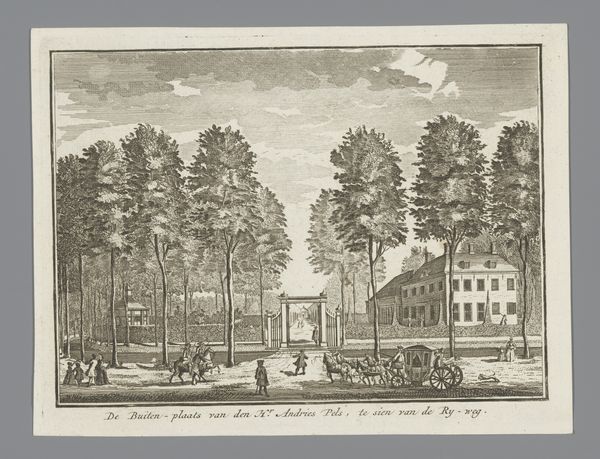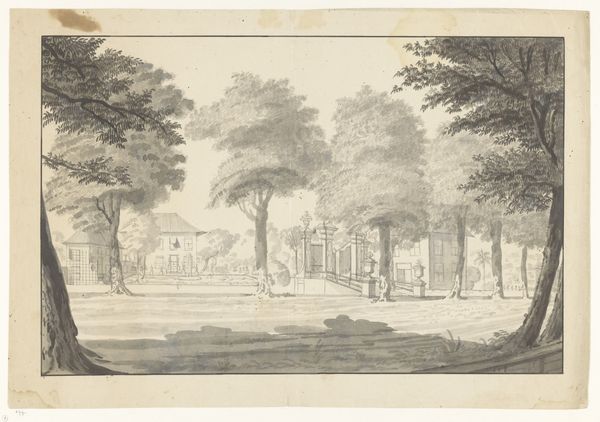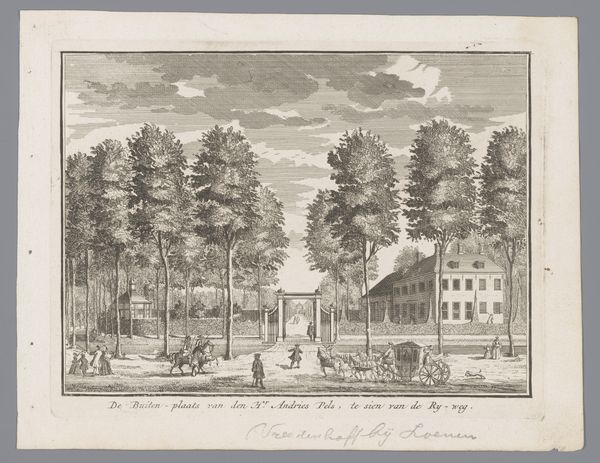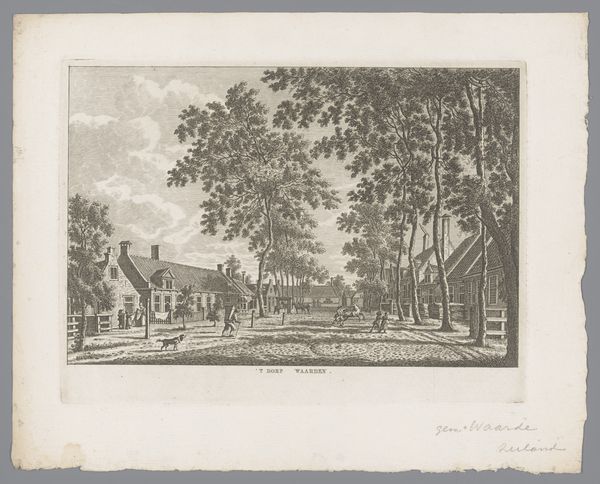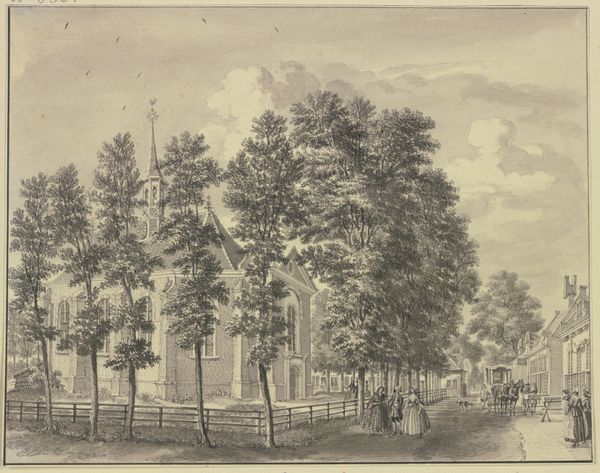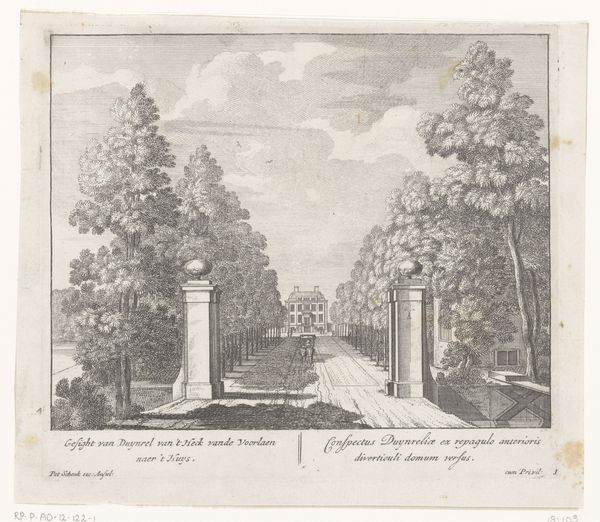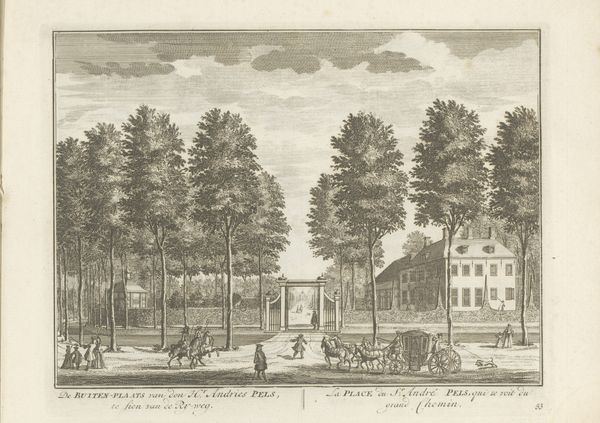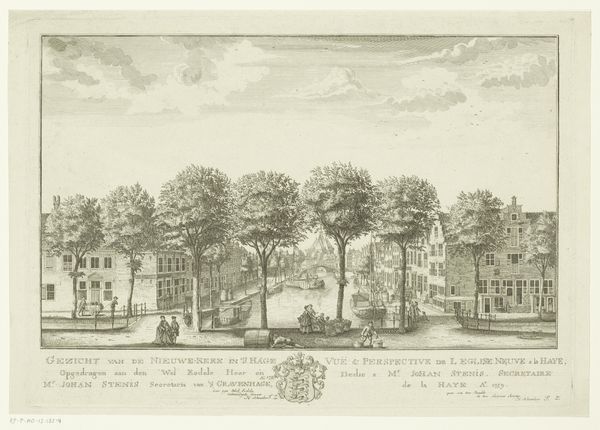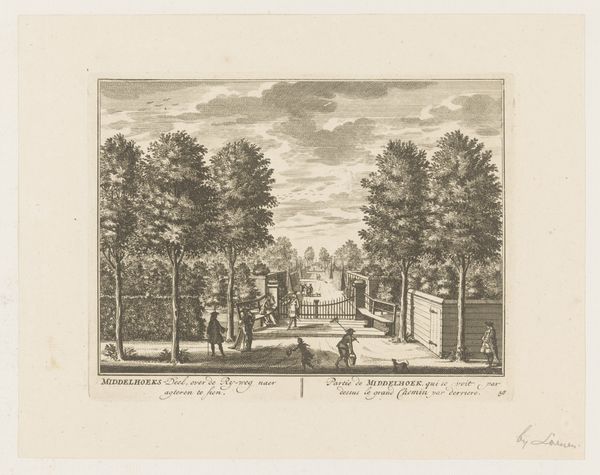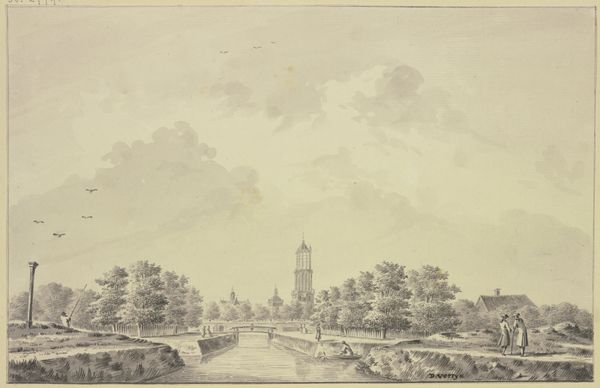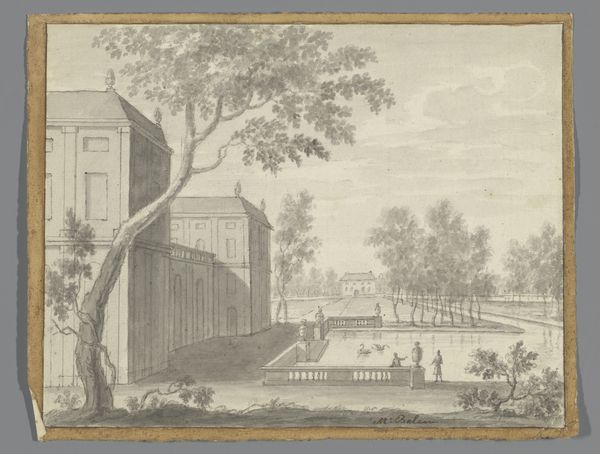
View of Naesse castle and De Coninck's Column from the East 1780 - 1784
0:00
0:00
drawing, print, etching, pencil
#
drawing
#
neoclacissism
# print
#
etching
#
landscape
#
etching
#
pencil
Dimensions: sheet: 5 3/4 x 8 1/16 in. (14.6 x 20.5 cm)
Copyright: Public Domain
Curator: Ah, yes, let's consider this image made with etching and pencil, it is titled "View of Naesse castle and De Coninck's Column from the East", created sometime between 1780 and 1784 by Erik Pauelsen. It's currently housed at the Metropolitan Museum of Art. Editor: There’s a hushed, almost sepia-toned stillness to it. The kind of light that makes you want to wander slowly and consider the precise geometry of the walking paths. Did everyone promenade back then, or is that just my imagination running wild? Curator: The monument at the center really catches the eye, it really dictates the social function of the place, a spot to stroll to. With these subtle variations of etching marks it really tells you something about public monuments during the dawn of neoclassicism. Also the medium that artist uses has also its importance in telling the history of the artifact. Editor: The way that globe is positioned on top of the column—is it about exploration or something else entirely? Feels so intentionally placed, not just an architectural flourish but loaded. It’s grounding, maybe. What’s your take? Curator: My interest leans more toward understanding how a print like this circulated. Who commissioned it? How was it consumed? Etchings enabled the reproduction and dissemination of imagery to a much broader audience. I'd love to know who this print might have impacted and who were the patrons and producers. Editor: I find myself picturing the artist there on a crisp morning, trying to capture that light, and trying to render every person present at that landscape. It must’ve been a peaceful task. Almost a meditative one, perhaps a respite from some heavy interior drama. Curator: Indeed, each material has an industrial supply chain. From pencils, acid, papers or print that make such piece possible for consumption. How accessible were these supplies and what impact the trade of those resources has to the piece's availability? Editor: True, though sometimes the pure, unadulterated vision—captured fleetingly—wins out for me. A record that resonates in a more direct, visceral fashion. Ultimately, the art itself draws us into these analytical directions in unique ways. Curator: And understanding that art in social and political environments is critical to appreciate art in every era, the role art plays from economic resource is essential for an artifact, I think that this dialogue, like this etching itself, highlights the many pathways into understanding history.
Comments
No comments
Be the first to comment and join the conversation on the ultimate creative platform.
